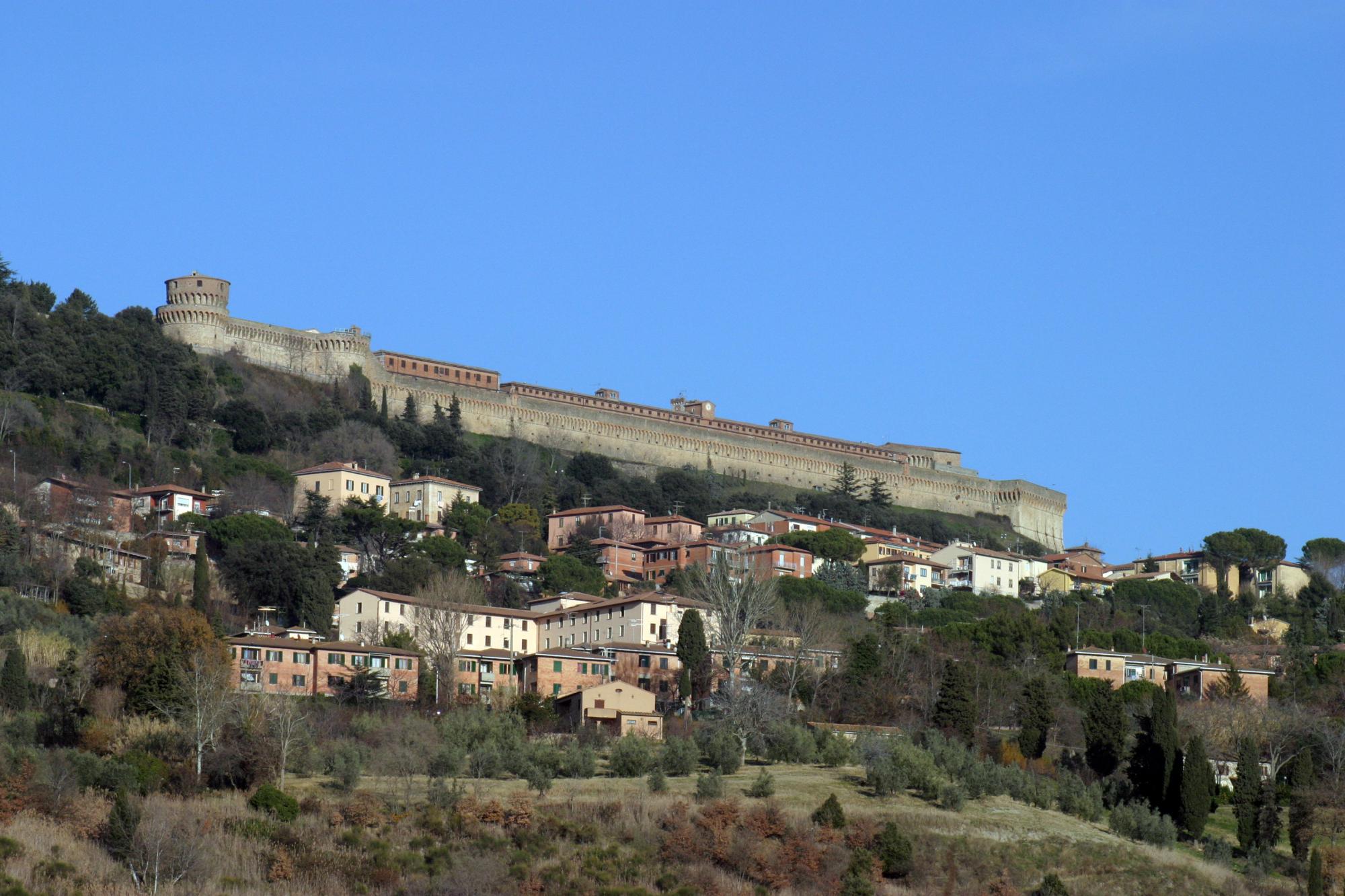
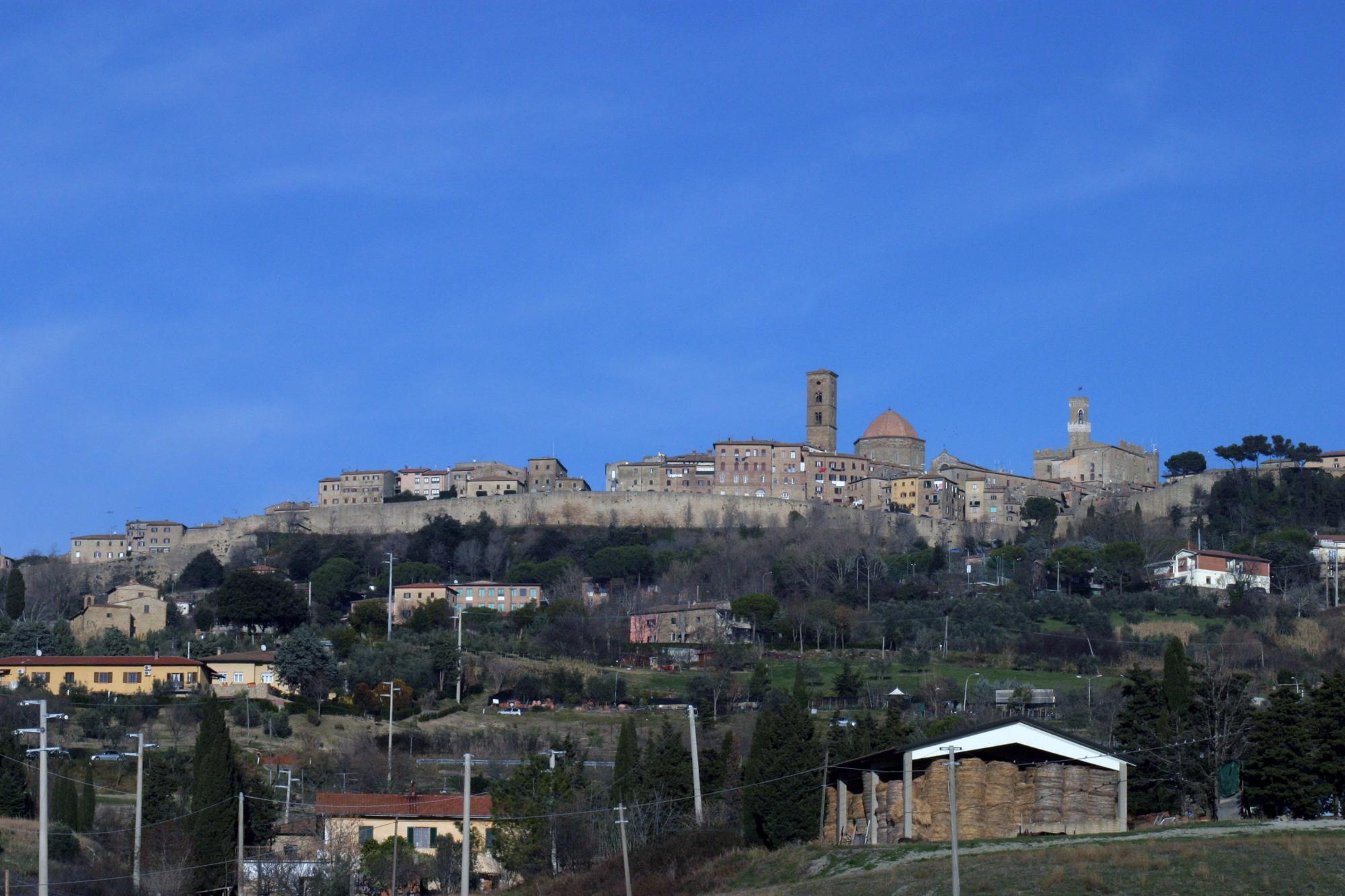

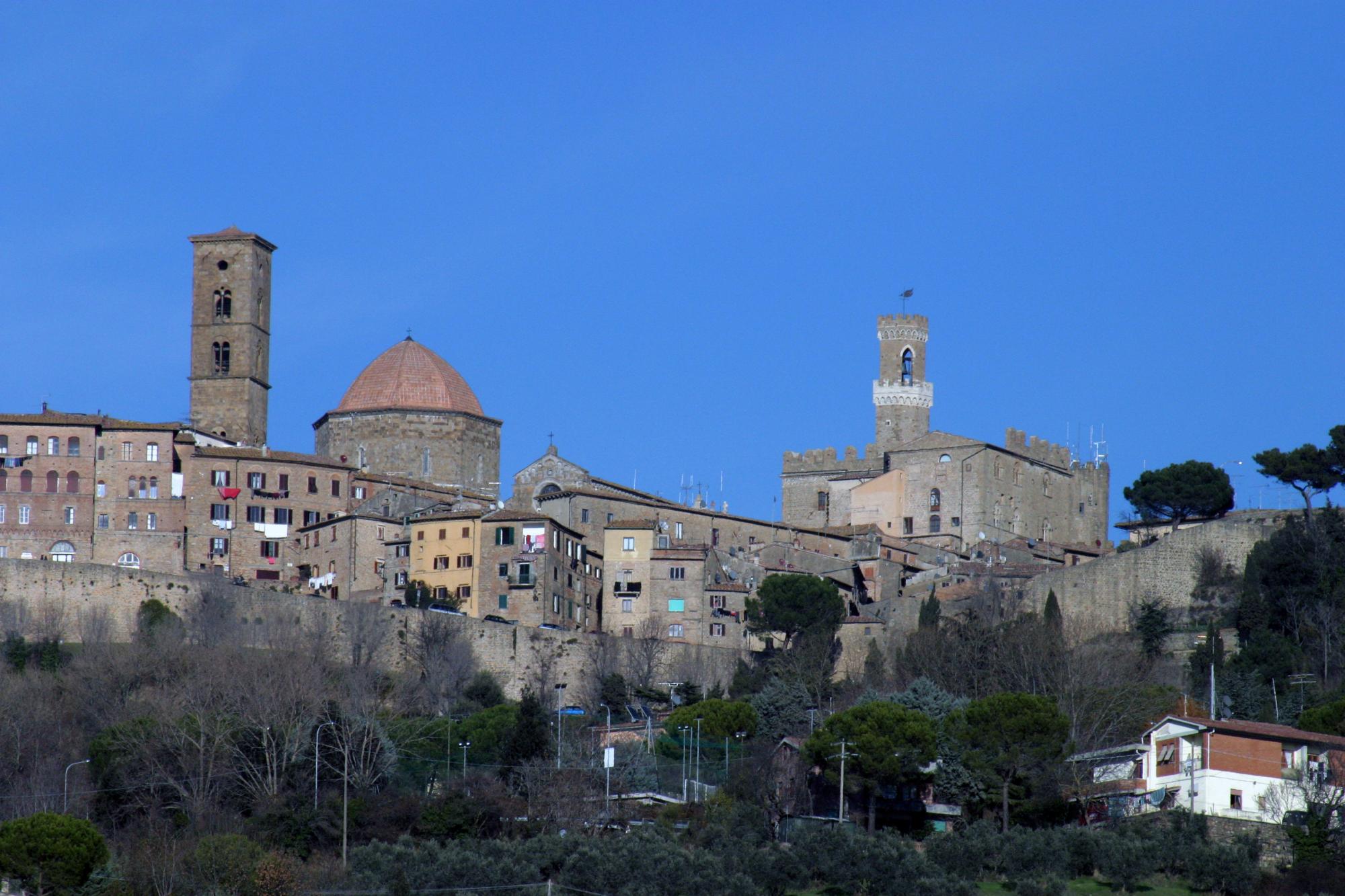
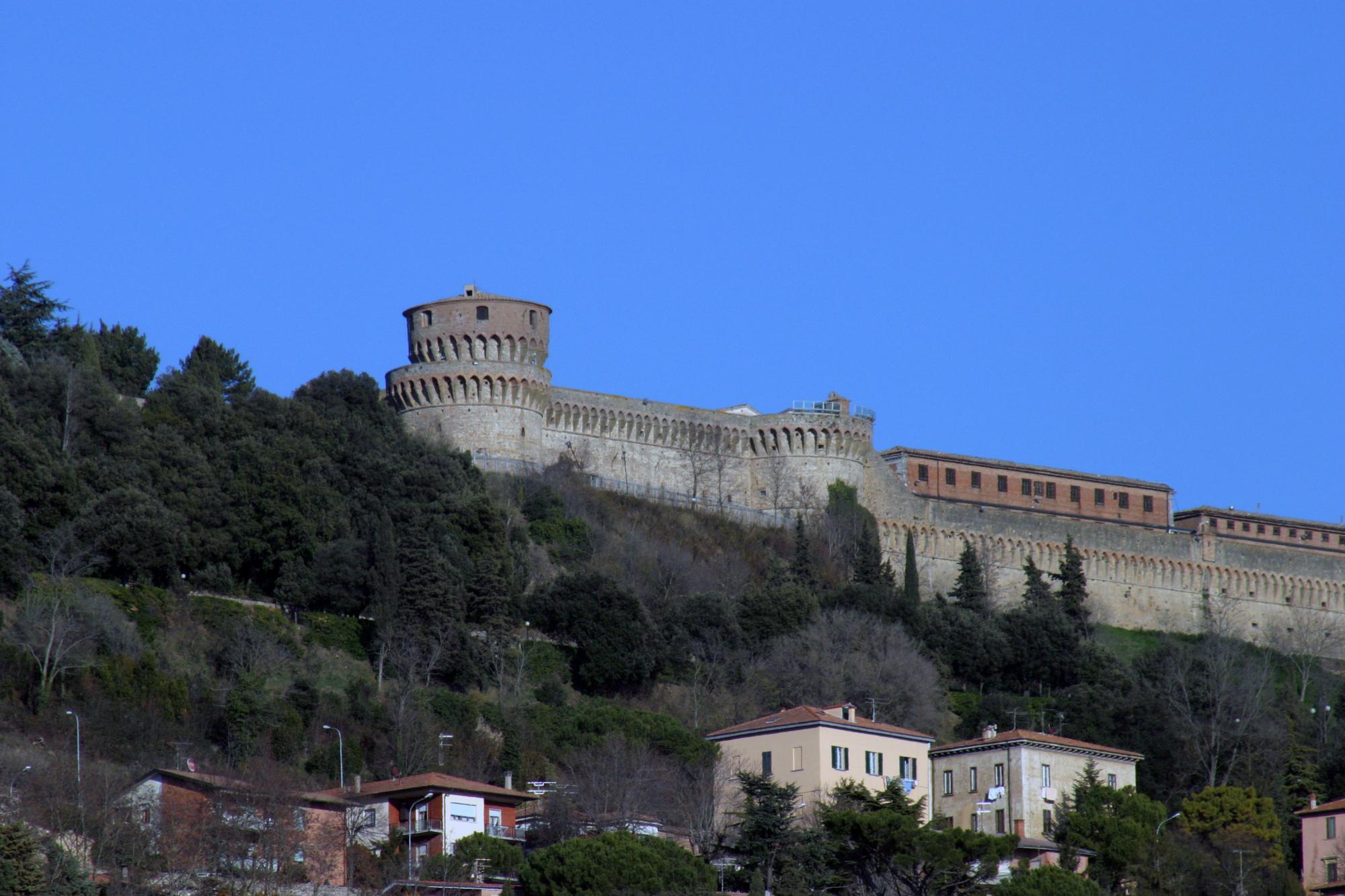


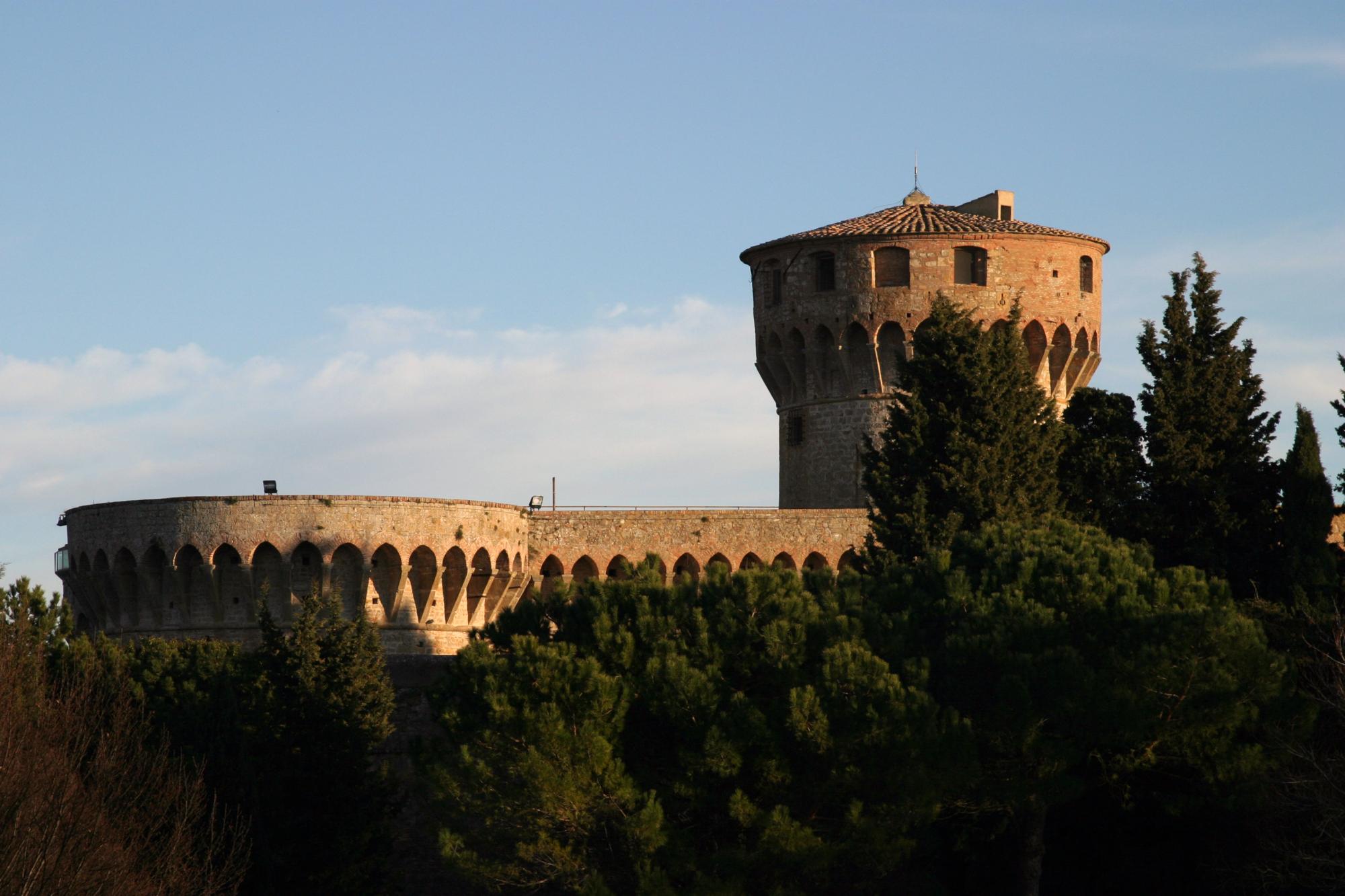


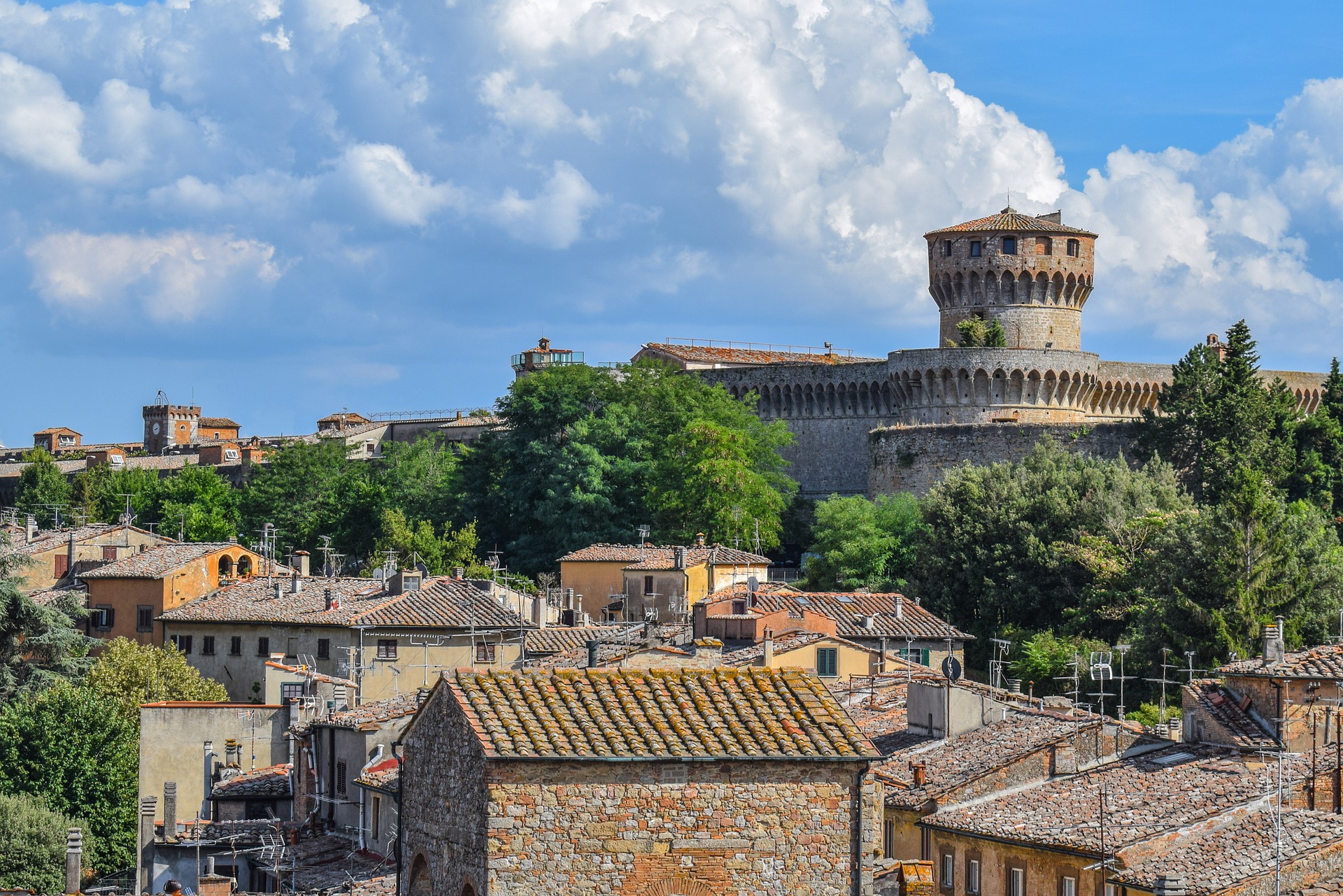











How to reach
Volterra crowns a hill at the confluence between the Val di Cecina and the Val D'era, in province of Pisa. The city can be reached from Florence following the motorway FIRENZE-SIENA up to the exit 'Colle Valdelsa Sud' and then driving on the SS68 road, called 'Volterrana', until the city walls.
History
Volterra is one of the most important historical Tuscan town, first great Etruscan 'metropolis' (or as the ancient said 'lucumonia') then Roman settlement. The town known medieval, Medicean and Grand-ducal memorable events, despite to its decentralized location. In this page only its fortifications will be described, masterpieces of the medieval military architecture, and not the many other monuments, of ancient and medieval times, that rise inside the city walls.
Approaching Volterra the first thing to be noticed is its profile crowned by the imposing fortress, that rises at dominion of the underlying territory. This view make us understand how great was the strategical importance of the city. The hill on which it rises, about 555 meters high, is the higher of this area, unapproachable from every side without being sighted with large advance.
Volterra has Etruscan origins, at that time was called the rich Velhatri, and its first town-wall enclosure, built during the 5th/4th century A.C., was seven kilometers long. This was the era of its greatest territorial expansion that, with the aid of the minerals extracted from the mines of the near 'Colline Metallifere' (Metalliferous Hills), brought Volterra to dominate the other 'lucumonie' (big cities) of the zone as Populonia and all the Tyrrhenian coast from Piombino to Luni, in the north of Tuscany. It was supposed that in 300 AC the city counted 25.000 inhabitants! In the 80 AC Volterra was, after a long siege, definitely conquered by the Roman, last big Etruscan lucumonia to capitulate. During the Longobard domination the city became a territory depending directly from the emperor, called 'gastaldato', but in the 10th century the history of Volterra turned into a negative trend. Hungarian troops, invoked to help the population in the war against the king of Italy Benengario I°, sacked the city, reducing it in ruins. After this episode, that left the town almost uninhabited, Volterra never reached its former Etruscan greatness.
From the year 929, and for the three following centuries, the bishops had temporal power over the city and this situation was recognized by various emperors. The town planning was developed around the ancient acropolis, were nowadays stands the fortress. In the year 1186, with the birth of the Italian city-states, the bishops maintained the power to elect the consuls and beating coin. This was the era of Volterra's partial rebirth, culminated in the city walls reconstruction. These, on the southern side, englobed the rests of the preexisting Etruscan-Roman walled enclosure, here we can still admire the beautiful Porta all'Arco (Arco Gate) crowned by three lion-heads carved in the stone (nearly unrecognizable). Having to enclose a smaller surface, the town-walls were newly built on the whole northern front and endowed of two gates, 'Fiorentina' (or S.Agnolo) at North and 'S.Francesco' at West.
In 1343 was built a castle, today known as 'Rocca Vecchia' (Old Fortress), on the oriental vertex of the acropolis, projected outside the line of the Etruscan walls just beside the 'Porta a Selci'. At the end of the 14th century the skirmish between the parties of Guelphs and Ghibellines, in Volterra as in every other Tuscan city, were resolved with the victory of the first party and this marked the beginning of the Florentine control over the city. The most important sign of this was the reconstruction and enlargement of the complex of the fortress, wanted in 1472 by Lorenzo il Magnifico, after the definitive military conquest of the city.
Volterra can be considered the first complete 'Rocca' built in Tuscany (a castle on a rock with scarp walls enclosure). From here started the ambitious program of Lorenzo for the strengthening of the Florentine territory borders. The fortification of Volterra had the double purpose to overpower the city and to create an important stronghold against Siena. The leader of the Florentine army that subdued Volterra was Federico da Montefeltro, commander that fought also in the Romagna campaign, an area where at least from some decades was in use the construction of bastioned fortresses in bricks, and perhaps is owed to him the idea to erect here a fortress of this kind.
The construction began with the 'Rocca Nuova' (New Fortress), at the western border of the acropolis' hill. It has a trapezoidal shape, near a square, with four cylindrical towers at each angle. Isolated at the center of the courtyard rises the keep, a round tower high twice those angular, a reminiscence of the precedents strengthened enclosures of the 12/13th century. From the oriental side of the 'Rocca Nuova' depart two long parallel wall curtains that connect it to the preexisting castle, transformed and now called 'Rocca Vecchia'. This intermediary area to the two fortifications had various functions: it prevented the enemy to penetrate at the same altitude between the two fortresses , it connected the opposite vertexes of the complex, it was used as 'inner ward' and space for protecting the population in case of the collapse of the city walls. The 'Rocca Vecchia', with its trapezoidal shape, was endowed on the eastern side of a semipolygonal bastioned building (a barbican toward the outside) at defense of the 'Porta a Selci'. The complex, practically a fortified little town, is endowed with a continuous machicolation, projection from the wall made of stone which has openings through which the defenders can fire directly below upon an enemy. The fortress is still practically intact thanks to the constant works of restorations, it was also used first as barracks and then as jail. Today it is center of an institute of punishment visible only from the outside. The Archeological Park, from where you can have a nice view on the Rocca Nuova is freely accessible.